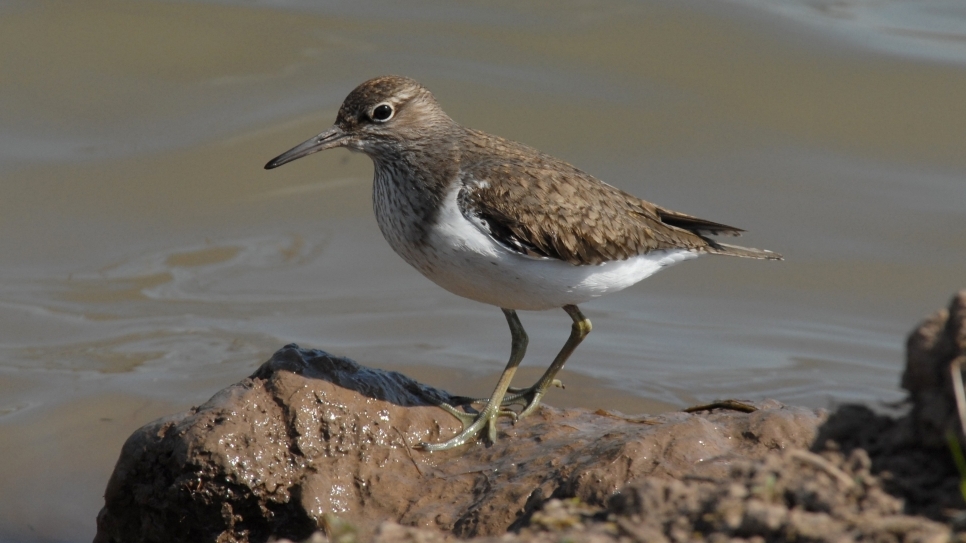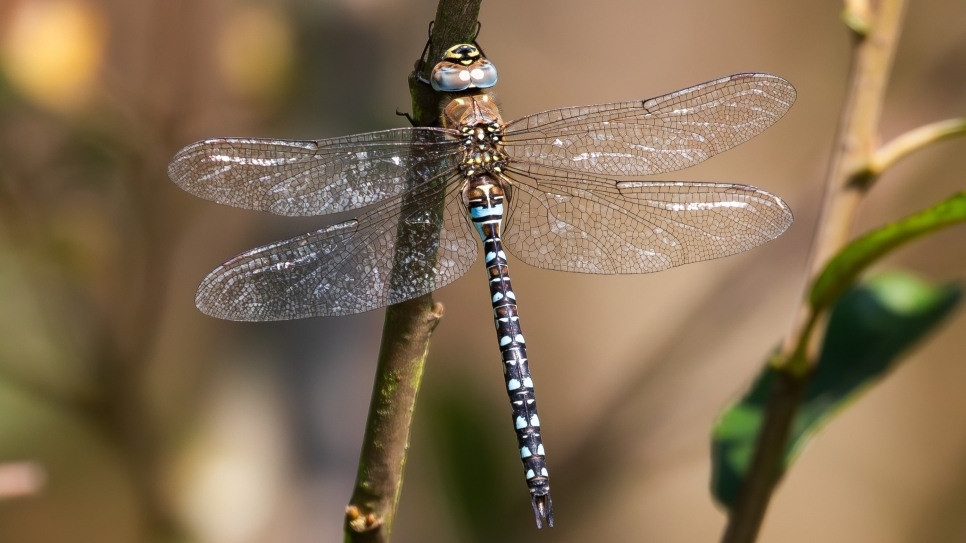Cottage garden or miniature nature reserve?

Living on site, some might say that the whole nature reserve is my garden. But next to the cottages there is a little patch that I can only describe as my own mini nature reserve. The cottage garden is a space for me to manage my own area for wildlife whilst also being an oasis to sit and enjoy.
Different sections of the garden have been managed to create an array of habitats. The hedgerows are rich with diversity, with species such as hawthorn, field maple, rowan, elder, holly, willow and spindle filling the boundaries. Rhododendron has been managed in the corner to control the spread of this invasive species, allowing space for other trees such as bird/wild cherry and silver birch to thrive. A small bird feeder station has also been set up using leftover coppicing materials, used alongside nest boxes to provide extra support for the bird population.
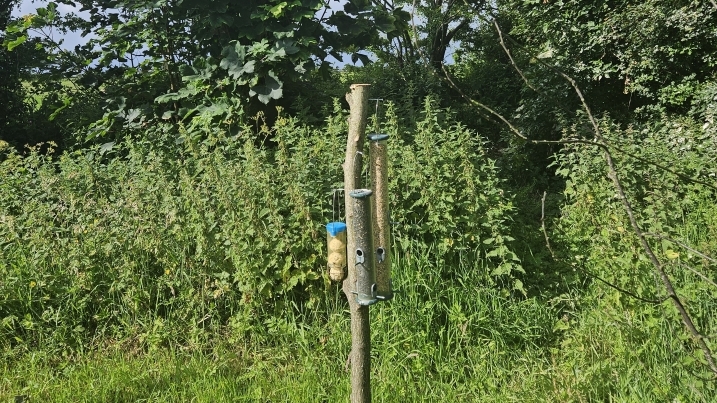
bird feeding station
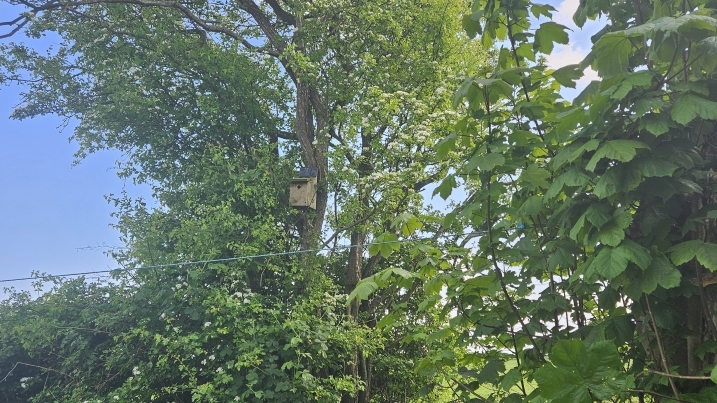
nest box
Many of the areas in the garden are left untouched. Field margins are left around the hedgerows, creating a layer of smaller scrub, brambles and grasses to provide cover for rodents and hares. Rough grassland areas are left alone to provide extra habitat for small voles and other invertebrates, which also support bird and bat species. A compost patch has also been set up for any food waste as well which can be used in raised beds to grow any vegetables but can also attract insects as another food source.
Ponds attract certain amphibian and newts to gardens which enhances the diversity within the garden ecosystem. By making sure the pond has gentle sloping edges, it becomes accessible to animals and provides them with a water source for drinking and bathing to keep cool in hotter days. Rainwater collectors are good to install to keep a source of water to keep your ponds topped up as well, as you should avoid filling directly from the tap where possible.
Since moving in I have also been able to create new areas for potential habitats in the garden. From encroaching willow in the hedgerows, I have been able to create a new willow coppice by the pond from stakes made out of waste material. Willow branches have adapted to root themselves when in contact with soil and is already seeing successful growth in the first summer in place.
Another patch of the garden has potential to become a nice wildflower meadow. This year's meadow creation efforts have allowed us to sow yellow rattle seeds that were collected here on site. Yellow rattle is a great starter plant for any meadow creation as it is parasitic towards grass. By feeding off the grass it reduces nutrients in the soil and provides less competition for other wildflowers allowing them to take over the plot. Wildflower meadows are great habitats for pollinators and other flying invertebrates.
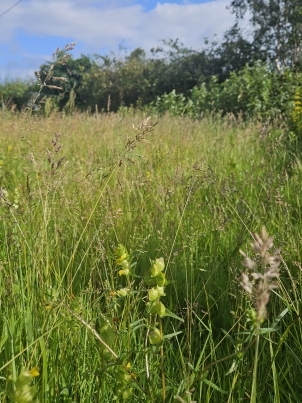
wildflower meadow
Rewilding a garden doesn’t necessarily mean giving it all up for nature, there are still things that can be done to make the garden an enjoyable place for you to use as well. For example, my garden has small areas that are mown down to allow for easy access via pathways but also to allow for nice seating areas as well. From leftover pollard material around the reserve, I’ve been able to make a nice seating circle out of old logs as well as benches down around the pond and in the rhododendron-cleared wooded area for a space with some shelter.
By keeping your garden more wild you can provide essential food sources, shelter and breeding grounds for animals helping them to thrive, especially in areas of urbanisation and intensive agriculture. It promotes biodiversity whilst helping to sustain these populations that are becoming increasingly endangered. By adopting less intensive gardening methods, you are also reducing your carbon footprint through reduced reliance on mowing equipment, chemical pesticides and fertilisers and utilising organic pest control methods such as homemade garlic sprays. In smaller spaces, adopting vertical gardening techniques and using container gardening methods can help optimise the use of the area. Small changes in the way we approach our gardens can have a substantial impact on local biodiversity and can help improve nature around us one step at a time.
Words and pictures by Rebekah Allison

